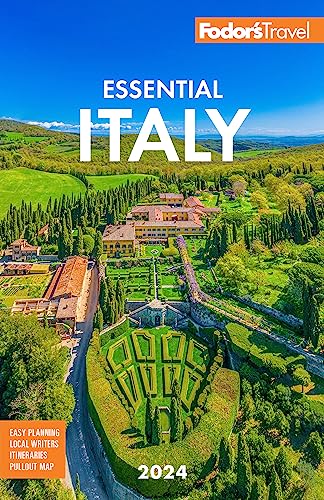Eating and Drinking Well in Umbria and the Marches
Central Italy is mountainous, and its food is hearty and straightforward, with a stick-to-the-ribs quality that sees hardworking farmers and artisans through a long day's work and helps them make the steep climb home at night.
In restaurants here, as in much of Italy, you're rewarded for seeking out the local cuisines, and you'll often find better and cheaper food if you're willing to stray a few hundred yards from the main sights. Spoleto is noted for its good food and service, probably a result of high expectations from the international arts crowd. For gourmet food, however, it's hard to beat Spello, which has both excellent restaurants and first-rate wine merchants.
A rule of thumb for eating well throughout Umbria is to order what's in season; stroll through local markets to see what's for sale. A number of restaurants in the region offer degustazione (tasting) menus, which give you a chance to try different local specialties without breaking the bank.
Tasty Truffles
More truffles are found in Umbria than anywhere else in Italy. Spoleto and Norcia are prime territory for the tartufo nero (reddish-black interior and fine white veins) prized for its extravagant flavor and intense aroma.
The mild summer truffle, scorzone estivo (black outside and beige inside), is in season from May through December. The scorzone autunnale (burnt brown color and visible veins inside) is found from October through December.
Olive Oil
Nearly everywhere you look in Umbria, olive trees grace the hillsides. The soil of the Apennines allows the olives to ripen slowly, guaranteeing low acidity, a cardinal virtue of fine oil. Look for restaurants that proudly display their own oil, often a sign that they care about their food.
Umbria's finest oil is found in Trevi, where the local product is intensely green and fruity. You can sample it in the town's wine bars, which often offer olive-oil tastings.
Pork Products
Much of traditional Umbrian cuisine revolves around pork. It can be cooked in wood-fire stoves, sometimes basted with a rich sauce made from innards and red wine. The roasted pork known as porchetta is grilled on a spit and flavored with fennel and herbs, leaving a crisp outer sheen.
The art of pork processing has been handed down through generations in Norcia, so much so that charcuterie producers throughout Italy are often known as norcini. Don't miss prosciutto di Norcia, which is aged for two years.
Lentils and Soups
The town of Castelluccio di Norcia is particularly known for its lentils and its farro (an ancient grain used by the Romans, similar to wheat), and a variety of beans used in soups. Throughout Umbria, look for imbrecciata, a soup of beans and grains, delicately flavored with local herbs. Other ingredients that find their way into thick Umbrian soups are wild beet, sorrel, mushrooms, spelt, chickpeas, and the elusive, fragrant saffron, grown in nearby Cascia.
Wine
Sagrantino grapes are the star in Umbria's most notable red wines. For centuries they've been used in Sagrantino passito, a semisweet wine made by leaving the grapes to dry for a period after picking in order to intensify their sugar content. In recent decades, Montefalco Sagrantino secco (dry) has occupied the front stage. Both passito and secco have a deep red-ruby color, with a full body and rich flavor.
The abundance of enotecas (wineshops and wine bars) has made it easier to arrange wine tastings. Many also let you sample different olive oils on toasted bread, known as bruschetta. Some wine information centers, such as La Strada del Sagrantino in the town of Montefalco, will help set up appointments for tastings.




